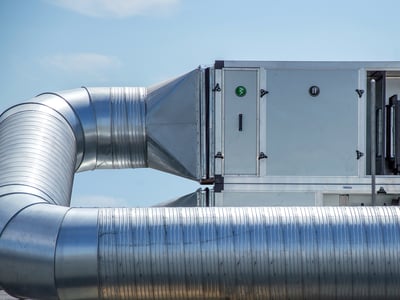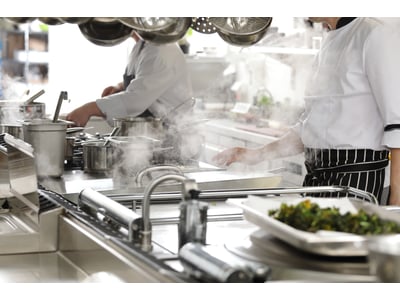Coloque ar interno limpo no cardápio de seu restaurante - e minimize o risco de incêndio, elimine odores incômodos, reclamações e aumente a fidelidade do cliente fornecendo ar fresco e limpo.
Hoje, cada vez mais pessoas estão saindo para comer. Eles também avaliam a experiência geral do cliente nos mínimos detalhes. Este aumento de tráfego pode trazer mais lucro, mas também riscos para a cozinha. É por isso que restaurantes de todos os tipos precisam de uma gestão do ar cuidadosa.
Uma cozinha comercial movimentada tem requisitos bastante diferentes do que a área de jantar da “frente da casa”, que exige um ambiente mais confortável e tranquilo. Na cozinha, um sistema de ventilação de alta taxa do restaurante é usado para remover o calor dos processos de cozimento e coletar fumaça, vapor e névoa de óleo.
Esse ar é normalmente despejado na atmosfera. Mover esse ar contaminado através de edifícios e descarregá-lo na atmosfera atrai vários riscos, incluindo:
As cozinhas comerciais são altamente ventiladas para remover o calor, a fumaça e o vapor. O tratamento cuidadoso do ar de exaustão e do ar fornecido é essencial para minimizar o risco de incêndio, eliminar o odor desagradável e fornecer ar de boa qualidade aos hóspedes pagantes.
Para mitigar os riscos, a melhor solução é uma combinação adequada de filtragem de ar que aglutina o óleo e a graxa, coleta as partículas finas e, por fim, remove os gases responsáveis pelo odor. As cargas de óleo, graxa, partículas e odores podem ser muito altas em aplicações de exaustão de cozinha. Após uma instalação bem-sucedida, os procedimentos de manutenção especificados devem ser seguidos para garantir a eficácia contínua.
Todo o ar que é retirado de uma cozinha e restaurante deve ser reabastecido. Se não for tratado de forma adequada, essa substituição do ar externo também traz riscos associados à higiene alimentar, danos a acabamentos e móveis e, claro, ao bem-estar dos funcionários e clientes. Portanto, o ar de entrada deve ser filtrado adequadamente para atingir altos níveis de qualidade do ar interno (IAQ). Para proteção humana, é importante que a fração de partículas menores, PM1, seja filtrada de forma eficaz com filtros ePM1 de acordo com a ISO 16890.

Proteja pessoas, processos, produtos e equipamentos, mantendo baixos os custos de manutenção e energia, mantendo as unidades de tratamento de ar desimpedidas.

Os clientes querem comer em restaurantes que controlam a segurança alimentar e a limpeza da área de refeições. Elimine odores e partículas de preparação de alimentos e diminua a possibilidade de contaminação de alimentos no ar e riscos de incêndio por vapores de óleo no ar.

Cozinhas comerciais são altamente ventiladas para remover fumaça, graxa e fluxo. A filtragem de exaustão é usada para minimizar o risco de incêndios nos dutos e remover o incômodo causado pelos odores.

Dentro de casa, estamos expostos a uma série de partículas e contaminantes que afetam diretamente nossa saúde. Se o ar fornecido não for filtrado de forma eficiente, você corre o risco de adicionar um número significativo de partículas nocivas ao ar interno.
Qualidade do ar Edifícios comerciais e públicos Respire Filtros e purificadores de ar
A Camfil está na vanguarda de um crescente movimento internacional para reduzir os efeitos negativos do ar poluído para a saúde. Como líder em soluções de ar limpo, informamos e educamos ativamente os clientes, tomadores de decisão e o público em geral sobre os poluentes atmosféricos ameaçadores e os benefícios tangíveis da filtragem de ar eficaz e da alta qualidade do ar interno.
Qualidade do ar Controle de Contaminação por Vírus Edifícios comerciais e públicos Respire Filtros e purificadores de arNos meses frios de inverno, nossas necessidades de energia e calor aumentam à medida que a temperatura cai lá fora. A mudança repentina de temperatura pode levar a um aumento acentuado nos níveis de poluição do ar externo. Além disso, o próprio frio significa que passamos ainda mais tempo dentro de casa, o que nos aproxima uns dos outros. Muitos não entendem como isso nos afeta e nosso ambiente interno.